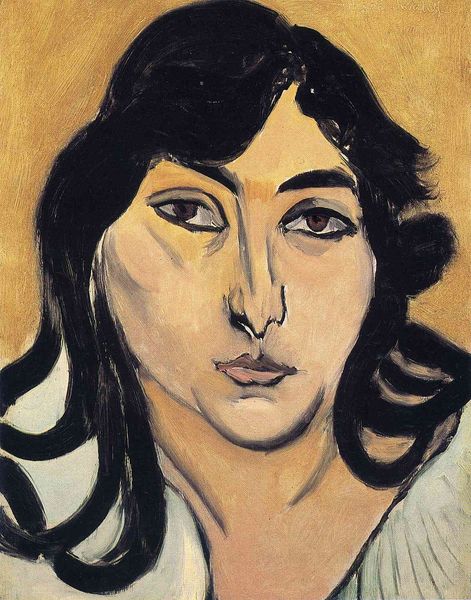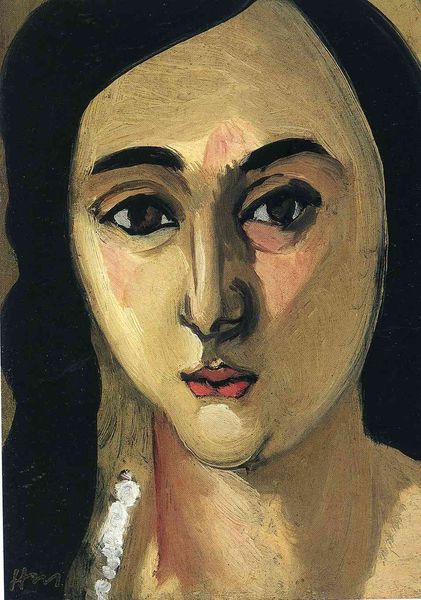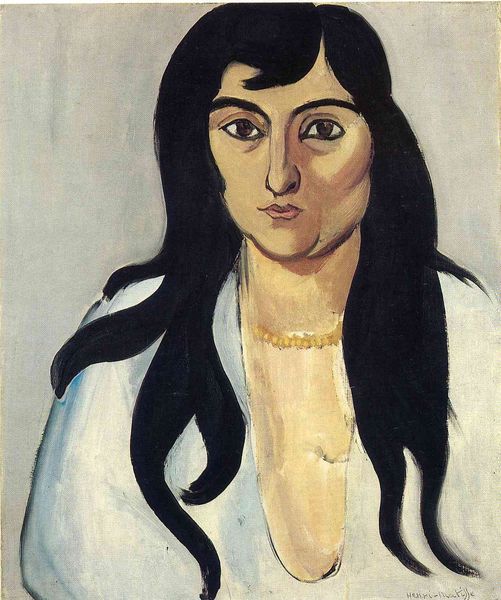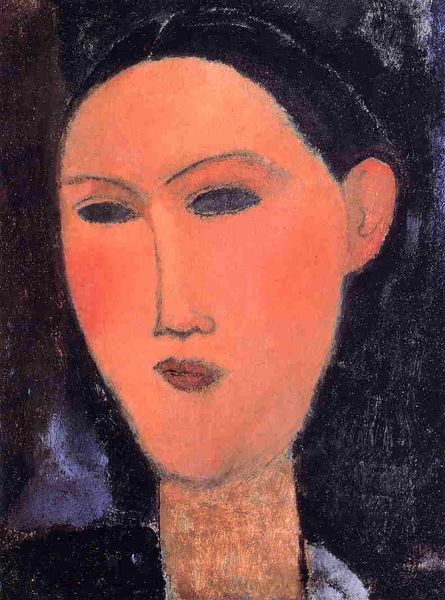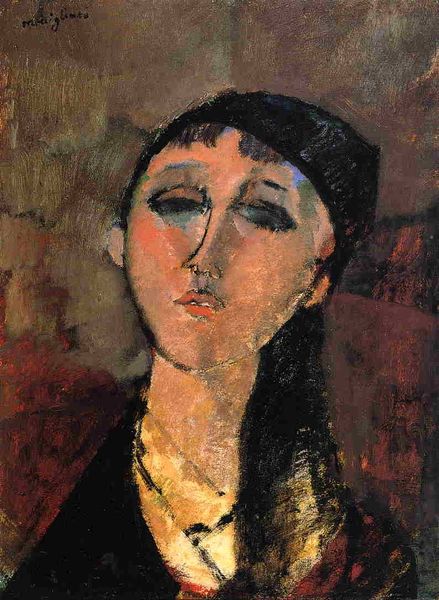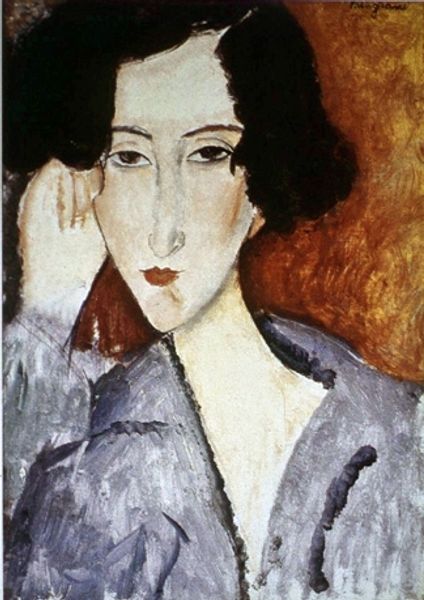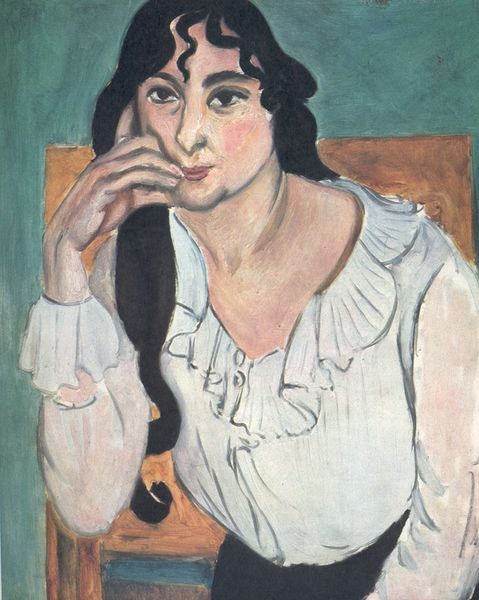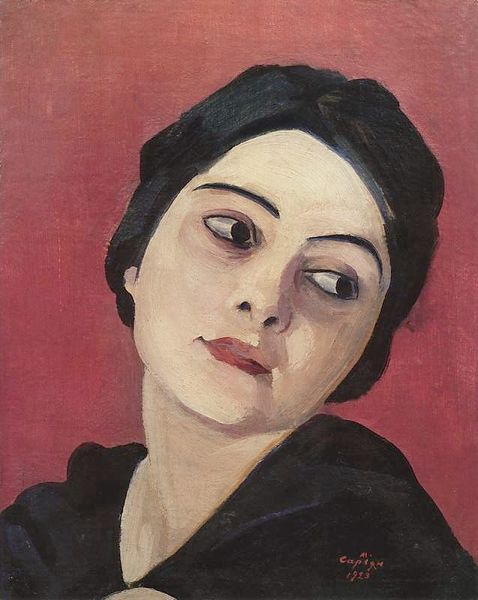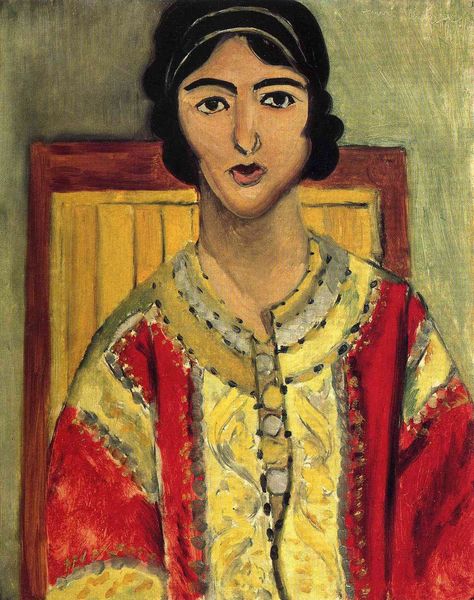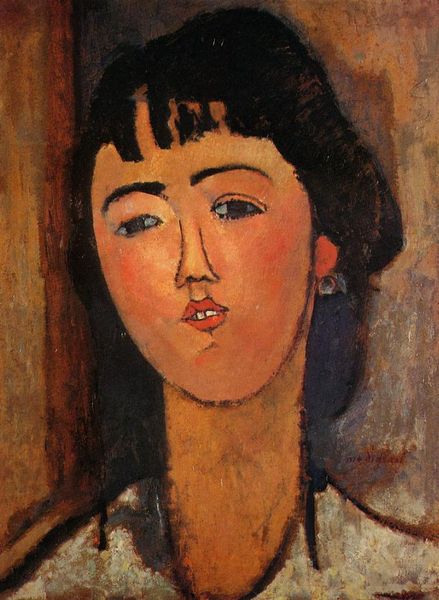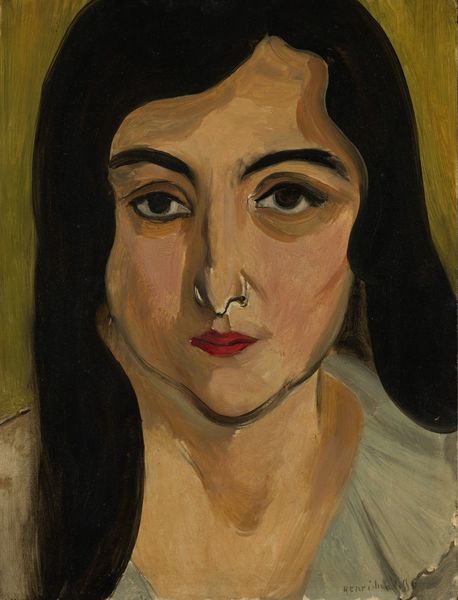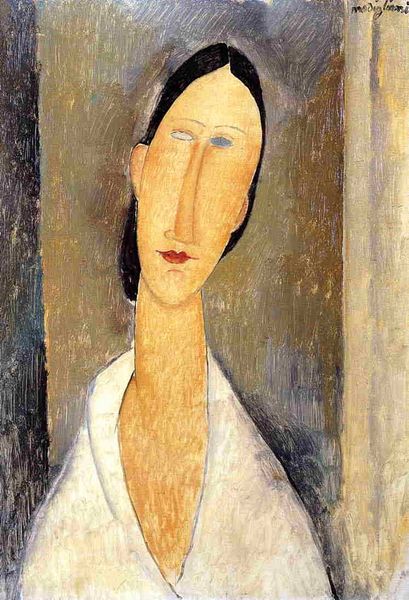
Dimensions: 35 x 26.5 cm
Copyright: Public domain US
Curator: Let's delve into Matisse's "Head of Lorette with Curls," painted around 1917. It’s striking how immediate and raw the portrait feels. Art Historian: Yes, my first impression is one of subdued intensity. The colors are surprisingly muted for Matisse, yet the gaze is quite arresting. Curator: Absolutely, and I find myself immediately wondering about Lorette herself, especially the power dynamics inherent in the artist-model relationship. In 1917, women’s roles were being redefined by war work and activism; how does this painting engage with contemporary discourses around female agency and representation? Art Historian: It’s true, context is key. During World War I, artistic production was, of course, deeply affected. Matisse’s work at this time moves away from the more overt radicalism of his earlier Fauvist works towards something quieter, perhaps reflective of a war-weary society. One must not overlook the patronage networks. Curator: Agreed, but consider, too, the pose. She rests her head in her hand. Is this weariness, thoughtfulness, or is she posed thus to frame the painting a particular way? Who had that control? Art Historian: Interesting. Her direct gaze, though, pushes back somewhat. It prevents her from becoming simply a passive object of the male gaze. It creates a palpable sense of connection with the viewer. Curator: And yet, by naming her only as "Lorette," we are also denied a fuller understanding of her identity. How might this title reinforce or challenge prevailing societal norms regarding the representation of working-class women in art? It looks very posed, as you said. Art Historian: True, the lack of specificity could also speak to a broader artistic trend of idealizing the female form. We also need to remember Matisse's engagement with modernism more broadly. How did he envision modern France when doing the painting? Curator: Precisely. This portrait isn’t just an image of a woman; it’s a complex intersection of gender, class, and artistic expression in a society undergoing profound transformation. And we haven't even considered his modern style! What would Lorette herself have thought? Art Historian: That point is critical to think about because in understanding art within its historical and social contexts, we can have a glimpse into its role of either challenging the status quo, reflecting it or perhaps even shaping it. Curator: Well said, and hopefully that has provided you with more questions to ask of the art on your left, now, to the art on your right…
Comments
No comments
Be the first to comment and join the conversation on the ultimate creative platform.
